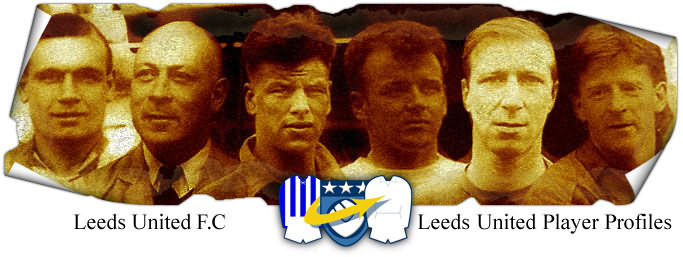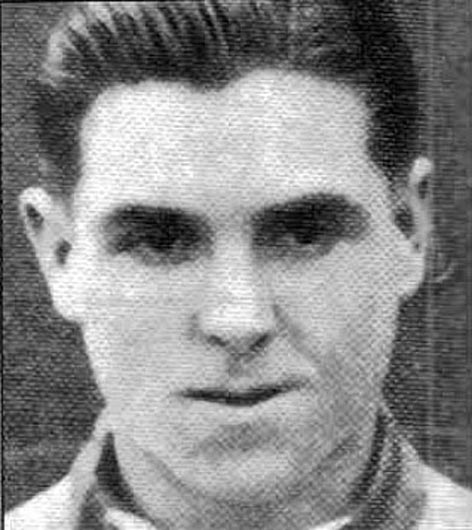

Furness: William Isaac (Billy)
1928-1937
(Player Details)
Inside Left
Born: New Washington, Co. Durham: 08-06-1909
Debut v Middlesbrough (h): 30-11-1929
5’6” 10st 6lb (1930)
Billy Furness was plucked out of Non-League football and matured into an England player.
Leeds spotted him playing for Usworth Colliery in the North Eastern League Second Division.
Earlier he had played for Washington Colliery, where he had worked as a clerk. His
boundless energy and skill caught the eye and the £50 they paid Usworth in August 1928 was
a bargain. He quickly became a regular and with his Geordie mate, Tom Cochrane, formed a
left side attack as good as any at that time, as Leeds came fifth in the old First Division,
the club's best achievement until the late sixties. There was little they could do as the
following season United suffered relegation as they tried to refresh and maintain their
squad, without success. There was instant promotion as the Edwards-Hart-Copping half-back
line matured and Furness and Cochrane supplied the ammunition for Keeley. Furness was a
regular scorer and still holds the Leeds record for the most consecutive games in which a
player has scored. He achieved the feat in the 1931-32 season as United gained promotion
from the Second Division. He started on 17th October 1931, when he scored the first goal
in a 2-1 win over Wolverhampton Wanderers at Elland Road and then continued to put the
ball in the net in each of eight games, at Charlton Athletic for the only goal of the game,
at home to Stoke City in a 2-0 win, at Old Trafford against Manchester United in a 5-2
victory, then at Elland Road in a 4-1 win over Preston North End, at Turf Moor as Burnley
were humbled 5-0, and then in two 3-3 draws, at home to Chesterfield and finally at
Nottingham Forest on 5th December 1931. Furness was capped in 1933, when on 13th May he
and clubmate Wilf Copping both made their debuts in a 1-1 draw against Italy in Rome. He
went to Hungary and Czechoslovakia with England in 1934, but he did not play on the tour.
He continued his fine form for United right up to the time he signed for Norwich City, the
club against whom he broke his collar bone two years earlier, for £2,700 in June 1937. He
proved as popular with the Canaries as he was with United and after the war played a few
games for them before retiring to become their trainer-coach. He scored twenty-one times
in ninety-three League appearances at Norwich and scored twice in three games in the
aborted 1939-40 season. During the War he played for Norwich in the rest of the 1939-40
season, scoring eleven times in thirty-one games, in 1940-41 he scored five goals in
nineteen games, in 1941-42 he netted three times in eighteen games, but Norwich only
played friendlies for the next three seasons until he scored eleven goals in eighteen
games in the 1945-46 season. After retiring from playing he became a member of the Norwich
coaching staff and he was later rewarded with a testimonial. He started as Assistant Trainer
and later became head trainer until 1955. He then continued as a physiotherapist until 1963.
He died in Norwich on 29th August 1980 aged seventy-one. He was induycted into the Norwich
City Hall of Fame in 2003.